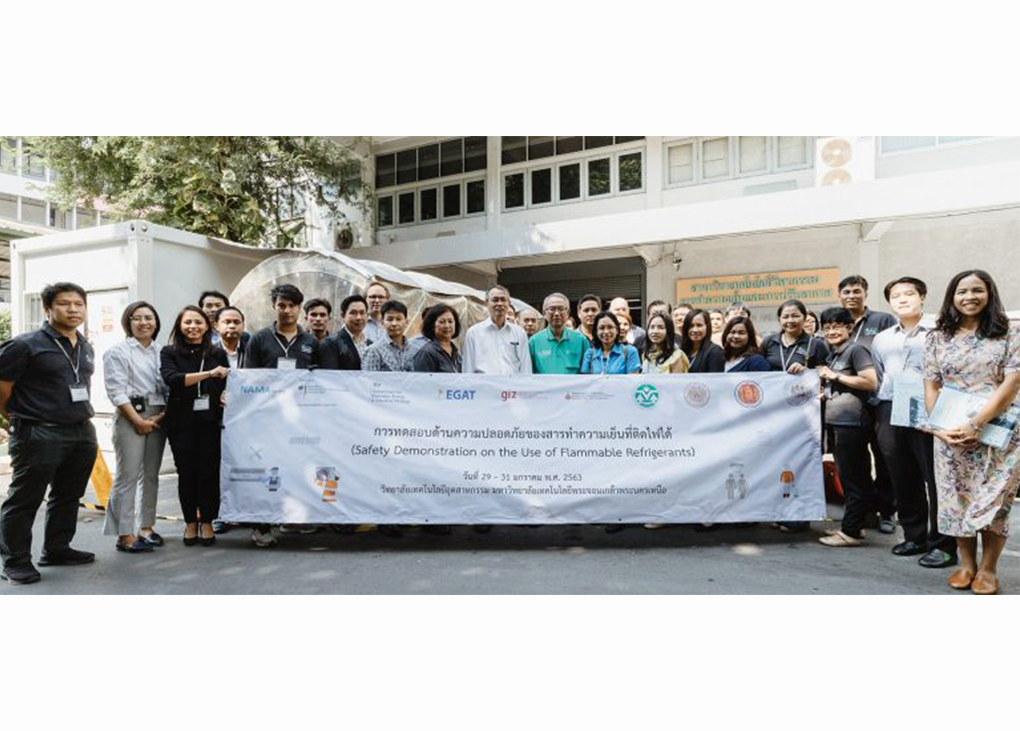The Thailand Refrigeration and Air Conditioning Nationally Appropriate Mitigation Action (RAC NAMA) has conducted Thailand’s first live safety testing of R290 (propane) for AC units.
The results, which support the safety of the flammable refrigerant, have been submitted to the Thai government to assist in its review of the country’s building code, says the organisation.
The RAC NAMA Project supports Thailand in overcoming hurdles in its move towards increasing the share of natural refrigerant used in the refrigeration and air-conditioning (RAC) technologies.
In particular, the Project helps to ensure the safe application of R290 in AC and refrigeration – giving advice on policies and standards, and training service technicians on the R290-based technology.
Despite having no ozone depleting potential and very low global warming potential, the refrigerant’s high flammability raised operational safety concerns following AC-related fatalities and injuries in the country, which led to tighter controls.
The Safety Demonstration with Source of Ignition and Leak Simulation Test (SOILST) proved that application of R290 is safe if applicable safety standards (for ACs: IEC 60335-2-40) are met, and if installation and servicing are conducted by trained technicians.
“The results of the safety test are useful for Thai producers because they now know what they need to focus on during the design and production of the R290 units,” says Sorntouch Khumdumrongkiat, test supervisor and professor of refrigeration and air conditioning engineering technology at the College of Industrial Technology, King Mongkut’s University of Technology North Bangkok.
“For the consumers, the test should ease their concerns over safety because it proved that there is an absolutely low flammability risk as long as the products conform to the standards.”
Leak simulation tests with different stakeholder groups – testing laboratory, AC and refrigeration producers, and policymakers – were conducted to provide realistic leak scenarios. It determined the range of leak mass flow concentration from R290 units that could be used without any significant fire hazard.
“Most new household and commercial refrigerators nowadays use R600a, which is also a propane just like R290. Even though R290 has higher flammability and the charge size for ACs is higher than refrigerators, it is still safe for application. The crucial part is during the design and production stage, because that is when we try to reduce the risks to an absolute minimal so that the chance of ignition is nearly zero,” says Professor Sorntouch.
“We should also not forget about the technicians who play an important role in installing and maintaining the units. With R290 ACs, there are new parts and processes, so the technicians need to be trained on the new knowledge, techniques and safety protocols. With all this, consumers do not need to worry at all.”
The RAC NAMA is a project commissioned in 2016 by the German Federal Ministry of the Environment, Nature Conservation and Nuclear Safety (BMU) and United Kingdom’s Department for Business, Energy and Industrial Strategy (BEIS).



Leave a Reply